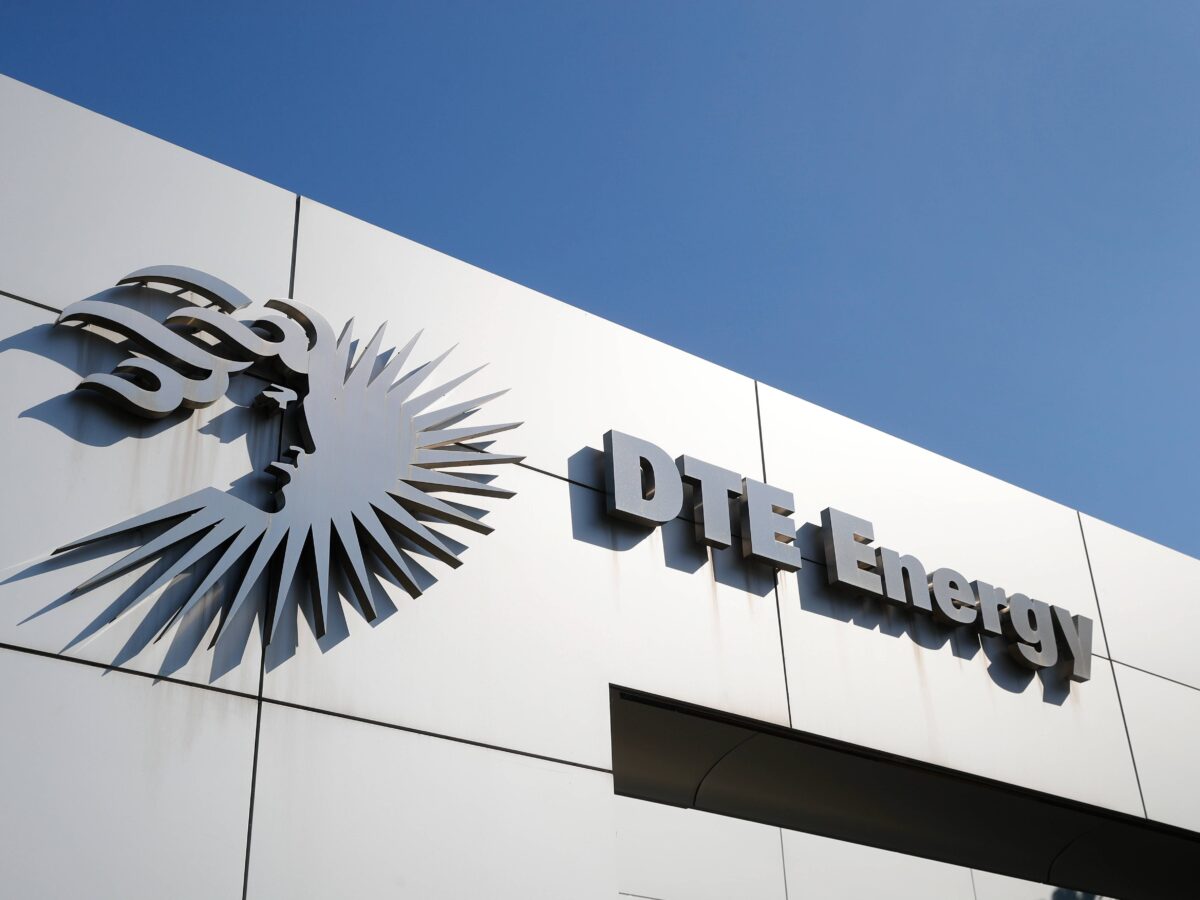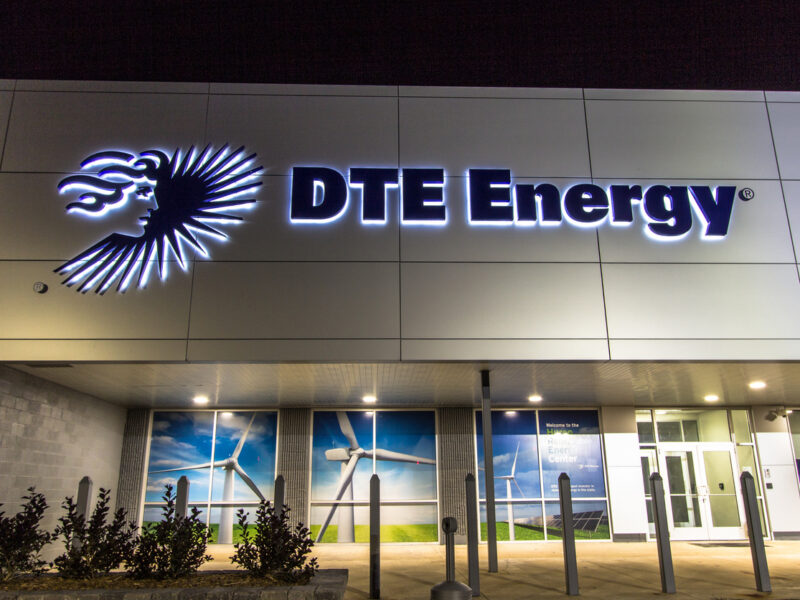Overview:
-Higher approved returns on equity raise customers’ bills and generally mean more earnings per share and larger dividends, or direct payments to utility stockholders, regulatory finance expert says.
-Eighty million Americans say they struggle to pay their utility bills, and 73% expressed concern their gas and electricity charges will increase this year, according to April poll.
-"The utilities know that this is the most important regulatory decision that's made," says author of national study on rates of return for utilities.
Investor-owned utilities are charging U.S. ratepayers as much as $50 billion a year to generate shareholder profits, according to a recent study from the nonprofit American Economic Liberties Project.
The Michigan Public Service Commission consistently approves returns on equity, or the net income of a utility’s gas or electric operation divided by shareholders’ equity, that are well above the long-term forecast for the broader stock market. Stocks average returns of roughly 6% to 7% when accounting for inflation, the study said.
This is curious, as utilities are considered low-risk stocks, with returns set by regulators. DTE Energy is publicly traded on the New York Stock Exchange, and Consumers Energy is owned by NYSE-traded CMS Energy Corp.
DTE Energy and Consumers Energy were both granted 9.9% returns on equity as part of their most recent electric rate hikes, above the industry average, per S&P Global, of 9.6%.
In its latest case for an increase in electric rates, filed April 24, DTE requested a 10.75% return on equity.
Higher approved returns on equity raise customers’ bills and generally mean more earnings per share and larger dividends, or direct payments to utility stockholders, according to Albert Lin, a regulatory finance expert, advocate for return on equity reform, and executive director at the OG Finance Lab.
It is much more common for utilities to pay dividends than other stocks, a dynamic that utility companies use to attract investors, he said.
At the same time, utility customers complain of an affordability crisis. Eighty million Americans say they struggle to pay their utility bills, and 73% expressed concern that their gas and electricity charges will increase this year, according to an April 23 poll from the ratepayer advocacy group PowerLines and the polling firm Ipsos.
Over the last three years, residential electricity rates for investor-owned utilities have increased 49% more than inflation, the report from the American Economic Liberties Project found. The customers of publicly owned utilities saw their rates increase 44%, less than inflation.
Regulators ‘captured by the industry’
Instead of granting high returns for utilities that add $300 annually to the average customer’s power bills, regulators should set a return on equity that equals the cost of equity, or the level of shareholder compensation needed to attract investment, according to Mark Ellis, former chief economist for the energy company Sempra and author of the rate of return study.
Ellis argues regulators continue to allow for high returns because they’re “captured by the industry”: influenced by experts from a handful of consulting firms that use flawed financial models to advocate for high rates of return. Moreover, ratepayer advocacy groups often use these flawed models, the study says.
There is ultimately no good explanation for why rates of return are set so high, Ellis said.
“This is wrong, and it’s costing consumers so much money,” he said.
MPSC spokesperson Matt Helms declined to comment on returns on equity, saying “these issues are fully litigated in each rate case, and the Commission spells out its rationale for return on equity in detail in its case orders.”
Douglas Jester, a consultant with 5 Lakes Energy, agrees with efforts to move utilities’ rate of return closer to the cost of equity, but added it would be “a revolution in how utilities are regulated.”
Regulators should gradually draw down returns to minimize financial difficulties for utilities like changes to bond ratings and future bond prices, Jester said. Yet he said the MPSC should move more quickly than it has to lower returns, which dropped from above 10% a decade ago, in some cases, to the present levels just below 10%.
Ellis said utilities have pushed back on lower returns by citing potential hits to the companies’ credit ratings. This could raise a company’s cost of debt, which generally makes up about half of a utility’s financing. Utilities have used the prospect of higher debt cost to argue lowering the return on equity will add costs for consumers, Ellis said.
Yet savings from a lower return on equity would more than offset any increase in the price of debt, said Ellis and others who spoke with Planet Detroit. The report adds that a slight adjustment of the equity to debt ratio would allow a utility to maintain the same credit rating and cost of debt even if its return on equity is reduced.
In response to questions about the company’s return on equity, DTE spokesperson Sallie Justice told Planet Detroit the company “continues to invest to improve reliability and generate cleaner energy for our customers; we’re also focused on keeping their bills as low as possible.”
Consumers Energy declined to comment on its return on equity.
Utilities are highly incentivized to continue earning high rates of return. Investor-owned utilities have a fiduciary responsibility to maximize value for shareholders, and some employees receive specific incentives to meet return on equity benchmarks.
For example, DTE CEO and Chair Jerry Norcia; CFO David Ruud; President and COO Joi Harris; and Vice Chairman and Group President Trevor Lauer were paid bonus compensation in 2024 partially based on the company’s return on equity, according to a DTE filing with the Security and Exchange Committee.
“The utilities know that this is the most important regulatory decision that’s made,” Ellis said.
DTE’s Justice told Planet Detroit the utility stopped using return on equity as an incentive for compensation this year.
MORE REPORTING FROM PLANET DETROIT
DTE files for $574 million rate hike, its second-largest request, months after its last increase
DTE Energy’s $574.1 million rate hike proposal aims to boost infrastructure and clean energy, raising Michigan residents’ bills by $13.50 monthly. Critics, including Michigan Attorney General Dana Nessel, challenge the plan, demanding proof that DTE’s expenses and rates are fair and justified.
DTE, Consumers have new reliability penalties, incentives from regulators: Is $10 million enough?
Michigan regulators set financial penalties and incentives for DTE Energy and Consumers Energy to meet reliability metrics, aiming to cut power outages and enhance overall reliability.
‘Missed opportunity’: DTE Energy’s $217 million rate hike exceeds AG’s recommendation
Michigan regulators approved a $217 million electric rate hike for DTE Energy, raising the average customer’s bill by $4.61 monthly, while the company failed to justify certain costs, including a pilot program to bury power lines.
Experts say utility returns fail to meet ‘just and reasonable’ standard
One roadblock to lowering utility rates of return to the cost of equity is figuring out precisely what the cost of equity is for monopolies with returns set by a commission, as opposed to the market.
“There’s no private business that’s going to be totally comparable to a regulated utility,” said Matt Bandyk, principal associate at Synapse Energy Economics, who frequently works on testimony for rate case filings.
The New York University Stern School of Business calculates costs of equity for industries and determined that in January 2025 this was 6.28% for utilities, well below the 8.92% cost of equity for the broader market.
“No regulated utility should be anywhere near or above the 8.92% rate, yet most are above it,” Lin, with OG Finance Lab, told Planet Detroit. He said it’s “highly illogical” to think the risk of a regulated utility is anywhere near the general market.
The U.S. Supreme Court weighed in on this issue in 1944 with the Hope Natural Gas decision, with Justice William Douglas calling for “just and reasonable rates” that were “commensurate with returns on investments in other enterprises having corresponding risks.”
“One of the key things in that decision is it’s not the path you take, it’s the results that govern,” Lin said. He added this undermines formulas that utilities use to push for rates above the cost of equity.
“At some point you have to say was the end result reasonable? Are you in the ballpark?” Lin said. “We’re not in the ballpark. The results are way off.”
Utility experts also use another financial metric to argue rates of return are unreasonable: the price to book ratio.
This compares the price of a company’s shares to the value of its assets minus any liabilities. Ellis’s report says price to book is roughly equivalent to the ratio between the return on equity and cost of equity.
For example, DTE Energy’s share price of $133.55 at the time of writing against a book value of $56.47 results in a price to book ratio of 2.37.
“If the price to book ratio is greater than 1 … the rate of return is greater than the cost of capital,” Ellis said. “This fact is staring regulators in the face all this time and they’re just ignoring it.”
The financial models used to push for high returns
Utilities and other parties filing testimony in rate cases use two economic models to determine estimates for rates of return that aren’t employed in any other area of finance, Ellis says in the paper.
These are the “risk premium model” and “expected earnings analysis.” The first model is based on historically awarded rates of return, while the second is derived from returns the company expects to receive.
“They do not even purport to estimate the cost of equity,” the American Economic Liberties Project paper says, arguing these models amount to circular reasoning. The Federal Energy Regulatory Commission prohibited the use of these models in 2022, stating the risk premium model “defies financial logic.” Nevertheless, utility and advocacy experts still use these models at the state level.
The “capital asset pricing model” and “discounted cash flow model” are also used in rate cases and have been employed in other financial fields. Ellis said consultants factor in “unrealistic assumptions” with these models to produce results similar to the aforementioned flawed models.
In addition to leading to higher rates, experts have said high returns incentivize expensive capital investments in property like substations and transformers that may benefit ratepayers less than maintenance activities like tree trimming that don’t provide a return on equity.
Ellis compared this to a car company “investing more and more capital every year to build the same amount of cars.” While a car company would go out of business if it did this, an investor-owned utility would increase its profits, he said.
Jester, with 5 Lakes Energy, said that by reducing its costs, a utility can earn an even higher return on equity than what the MPSC approved.
“That can be achieved by convincing the MPSC that costs will be higher than they really are (and) providing poor service such as trimming (the) tree trimming budget,” he said.
How regulators could rein in return on equity
Some utility experts told Planet Detroit a gradual approach could reduce disruptions to a system that needs to be reliable. Utility commissions may be disinclined to move quickly for their own reasons as well, Synapse’s Bandyk said.
“If you’re all of a sudden approving such a lower ROE … it would be admitting errors that they’ve made before,” he said.
A gradual drawdown of rates of return would show that utilities’ arguments that such a move would lead to problems were overstated, and then further reductions could take place, Bandyk said.
California utility Pacific Gas and Electric is one example of a company that effectively had its returns cut when regulators forced it to pay penalties for wildfires caused by company equipment, Lin said. Despite the company filing for bankruptcy multiple times, seeing a drop in its stock price, and a downgrade of its debt rating to junk status, PG&E has continued to attract billions in investment.
Bandyk said there hasn’t been a coordinated effort to lower returns on equity, with many of the environmental groups that intervene in rate cases understandably focusing on environmental issues.
This may be changing. The Michigan League of Conservation Voters and Detroit Action issued a press release on April 8, criticizing DTE and Consumers plans to file new rate hike requests and drawing attention to executive bonuses for securing high returns on equity.
“Big utility CEOs are making money hand-over-fist while we pay the highest energy costs in the Midwest for the worst reliability,” Scott Holiday, executive director of Detroit Action, said in a statement. “When will it end and where are our lawmakers who are supposed to be overseeing them?”





